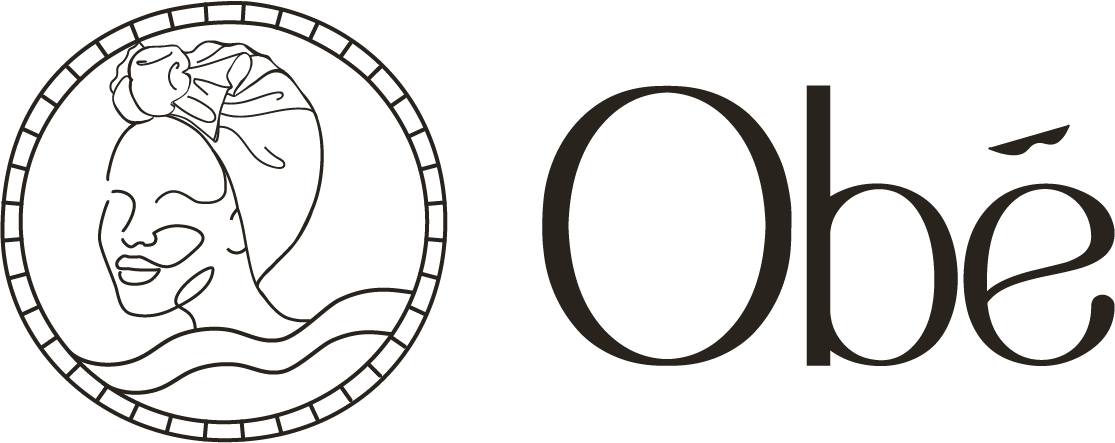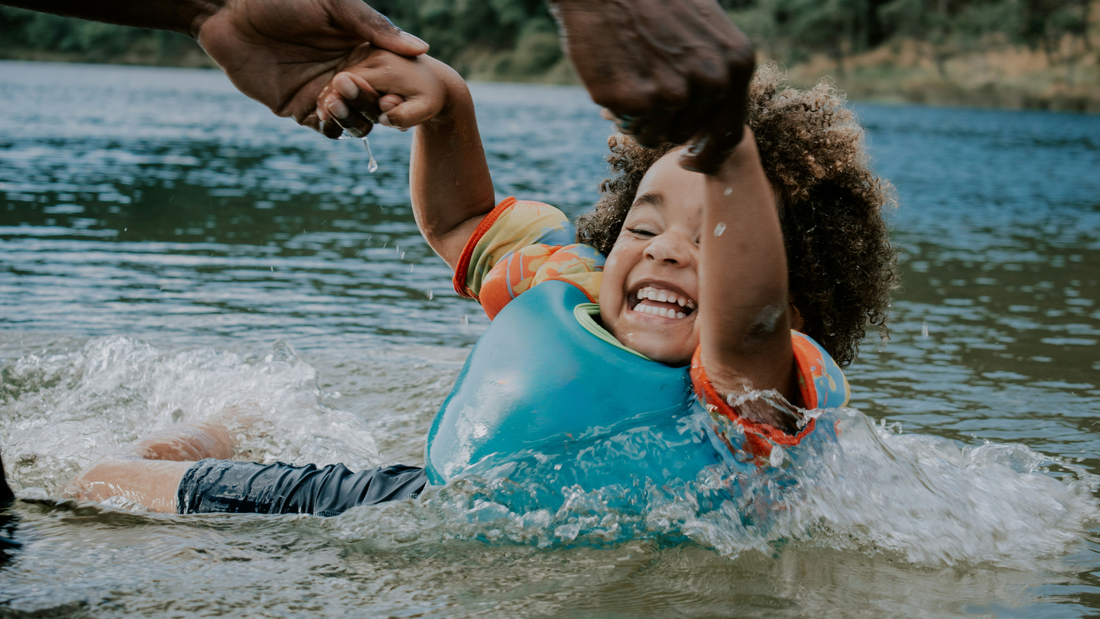Obé started because I wanted my daughter to learn how to swim. Something that may seem so simple to many, yet for me, I saw it as the gatekeeper to her freedom and opportunity.
The ability for her to embrace water without fear opens the door to so many benefits to her health and well-being, just from having the confidence to be in, on, or around the water.
I never imagined it would lead me down this path in life. One where I found myself quite literally in the deep end, despite spending a lot of time avoiding the water myself, I was in a position where I was championing our daughters (and sons) for the change I wanted to see.
Once I became aware of the shocking experiences and data, that highlighted the huge participation disparities in water-based activities for our community, I saw no other option but to advocate for change.
I want to share with you some of those shocking statistics and help you with the steps you can take to change the future for ourselves, and the generations to come.
Drowning is a global epidemic
According to the World Health Organisation (WHO), drowning is a global epidemic. It is the 3rd leading cause of unintentional deaths worldwide and accounts for 7% of all injury-related fatalities annually.
What does that mean for us?
Let's dive into the data to understand more about this, and what we can do to break the cycle.
Firstly, what does the data say?
Sport England has recently released the latest results of the Active Lives survey they conducted. They found that 97% of Black adults and 82% of Black children in the UK do not swim. It is important to note, that the phrasing used does not mean that they cannot swim, it means they are not swimming.
Sadly, this statistic has increased by 2% since the last set of data was gathered.
The lack of participation with water is at similar levels for Asian communities within the UK. Currently, this stands at 96% of Asian adults, and 79% of Asian children who do not swim.
Studies have also been conducted in the US by USA Swimming, which found that 67% of Black adults and 70% of Black children do not swim.
Why aren't we swimming?
The Black Swimming Association (BSA) conducted pioneering research to understand the barriers for our communities and why we are choosing not to get into the water.
Early Experiences
How we interact with water was found to be impacted by our experiences in childhood. Those respondents who had positive experiences at a young age such as higher levels of family engagement or enjoyment of school lessons, were more likely to have greater swimming confidence and competence in the water in adulthood.
Comparatively, those who had negative experiences in their youth, and disruptions in learning to swim fostered disengagement.
Water Safety Awareness
Another barrier highlighted by survey respondents was that they felt ill-equipped to engage in aquatic activities safely. They believed they lacked appropriate water safety knowledge and awareness to be able to keep themselves or their family members safe.
Lack of Aquatic Skill
Despite finding confidence in engaging with water on vacation, this did not travel through to when they were home. Many participants viewed the two separately. Water was to be enjoyed on holiday, but when home, they felt they had limited physical capabilities and aquatic skills to participate in water activities. Limiting their participation to a few weeks of the year increases the potential risk of drowning.
Awareness of Aquatic Activity
Most participants knew where their local swimming pools were, but they had no idea about their timetables, available sessions, or whether they had swimming clubs. Equally, they were unaware of what other activities were available locally to them, such as open-water facilities, canoeing, kayaking, fishing, or rowing.
Fear of Water
A commonality amongst respondents was a longstanding fear of water. Something that developed in childhood and teen years, either through generational aquaphobia passed down through familial and third-party stories, or from bad personal experiences with swimming lessons. This stopped them from participating and continued into adulthood.
Aquatic Cultures
Differences in the way swimming is taught impacted the engagement in the activity. For example, those respondents with a Caribbean background shared that they were encouraged to swim for leisure and enjoyment.
When relocating to the UK and Canada, swimming lessons centred around technique and a push to competitive swimming. This took the fun and enjoyment out of the activity and fostered disinterest.
For other cultures, swimming was not viewed as a priority, so there was no pressure or expectation to participate.
Body, Hair and Skin
Concerns regarding privacy, modesty, and body consciousness were most prominent among respondents of the older age brackets and those from the Muslim community.
Black and Asian participants had concerns about the costs associated with having to purchase swimwear, and body and haircare products that suit their needs.
A third and most commonly selected barrier to engagement was cited as being their hair.
Socio-economic, Structural, and Practical Barriers
One of the most frequently mentioned reasons for not swimming regularly was a lack of time or an incompatible schedule with swimming.
Some acknowledged that the lack of participation would detrimentally impact their water safety knowledge and competence, but were more concerned about the financial implications of being aquatically active. They viewed it as an expensive past time.
Stereotypes and Visibility
Respondents referenced negative stereotypes and a lack of representation as impacting their interest in water-based activities. They don't see themselves or others like them at the pool or in marketing literature. 32% reported that a representation in marketing materials would have a positive impact.
Over a third of respondents indicated that having friendship-based swimming groups would encourage engagement and participation.
Aquatic Perceptions
Respondents understood the many health benefits from swimming, and the opportunity for fun with the family. However, they felt regular engagement was not accessible to them because they perceived water-based activities as being 'only for White people'.
A staggering 84% felt that aquatic activity was uncommon in their community.
Why is it important that we swim?
Black children in the US are 7.6 times more likely to drown than their White counterparts. Most shockingly, they are more likely to drown in a public pool where you would expect lifeguards to be present than White children who tend to experience drowning in a residential setting (source: CDC).
Comparatively in the UK, Black children are 3.5 times more likely to drown than White children (source: Sport England).
Children whose parents swam and encouraged them to swim had a much lower chance of drowning and a much higher chance of participating in swimming competitively (USA Swimming Foundation).
Aside from the safety aspects, swimming has a hugely positive impact on our overall health and well-being.
It is a low impact source of cardiovascular exercise. Decreases the risk of heart disease, helps to regulate blood sugars, and burns calories to name but a few of the physical benefits for your body.
For your mental health, some of the benefits include helping to improve sleep, boosting your mood, and managing stress levels.
What steps can we take to change the outlook?
There are some aspects of this data that we, as individuals, cannot change. It is the role of organisations like the BSA to influence systemic and infrastructure change to help increase participation for all and ultimately save lives.
However, what we can do is have the courage to step in.
Our children are what they see. If we do not swim, they do not swim. This was a realisation I was forced to face at the start of my own journey of getting into the water. I had to overcome my fear to keep my children swimming, and in doing so I unlocked a deep, revitalising love of water I didn't know was possible.
The BSA offers introductory 6 week courses, specially designed for beginners. They will guide and support you even if you have never stepped foot into a pool.
Alternatively, you can find more localised organisations such as Black People Will Swim or Black Owned Swimming School (B.O.S.S) who offer similar programmes.
If that feels like a bigger journey or something you aren't ready for that's OK.
Encouraging your children to participate will go a long way to keeping them safe. It is important to prioritise and facilitate swimming lessons where you can, improving their water safety knowledge and confidence. This will help empower them to be safe, to get in, and stay in the water.

